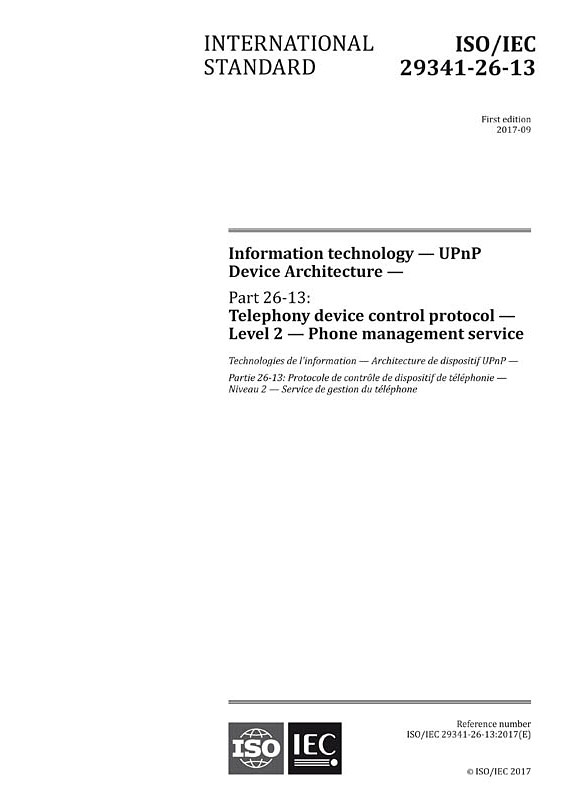ISO/IEC 29341-26-13:2017
Information technology - UPnP Device Architecture - Part 26-13: Telephony device control protocol - Level 2 - Phone management service
Ausgabedatum:
2017-09
Edition:
1.0
Sprache: EN - englisch
Seitenzahl: 71 VDE-Artnr.: 224923
ISO/IEC 29341-26-13:2017 specifies the PhoneManagement profile of the ConfigurationManagement Service defined in [7].
The PhoneManagement profile can be used for managing the configuration of the UPnP TelephonyServer device (i.e. a telephone), with tasks such as managing an address book, configuring the settings of the phone, configuring the ringing modes, checking the battery level of the phone. This profile is compliant with the UPnP Telephony Architecture defined in [9].
PhoneManagement defines
- A profile of the CMS in order to satisfy the requirements for PhoneManagement (see clause 5).
- The Phone Data Model to perform configuration management of the specific features of a phone (see Annex A) by reusing the CMS data model (see [7], Annex B).
The ConfigurationManagement service offers a general purpose data model and a set of configuration management operations for retrieving and managing the actual configuration parameters of a device. These features are completely reused from CMS in the PhoneManagement.
The ConfigurationManagement service defines the functions for manipulating the configuration and status parameters that are exposed by the device hosting the ConfigurationManagement service. These actions and state variables defined in the ConfigurationManagement service are reused in order to manage the configuration parameters of a TelephonyServer device for e.g. phone, defined in the data model of the PhoneManagement.
The main goal of this specification is to define the data model (called herein as Phone Data Model) for the TelephonyServer device like Phone, according to the rules defined by the ConfigurationManagement service for defining a new data model.
The Phone Data Model is organized as a hierarchical tree of parameter sets, where each set represent a feature of a TelephonyServer (e.g. address book, ringing modes etc) that can be managed by a TelCP.


